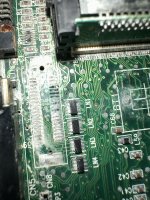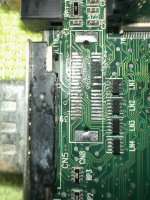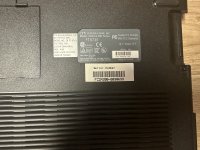Well if it wasn’t dead before then it is now.

I let this area soak in vinegar for a bit and it did a bit too good a job of removing the corrosion. I did actually get more signs of life (more LED activity than normal, and the CPU heated up a bit) out of it before it broke off. This part was very likely the issue. I’d attempt to resolder it but as expected many pads went off with it.
RIP
Well, I guess I could attempt to repair it anyway. I’d have to desolder the VGA port for clearance and rig something up for the 6 broken pads. I can actually see where they go to but it’s all very, very small. A fun experiment I suppose. Maybe I’ll try.

I let this area soak in vinegar for a bit and it did a bit too good a job of removing the corrosion. I did actually get more signs of life (more LED activity than normal, and the CPU heated up a bit) out of it before it broke off. This part was very likely the issue. I’d attempt to resolder it but as expected many pads went off with it.
RIP
Well, I guess I could attempt to repair it anyway. I’d have to desolder the VGA port for clearance and rig something up for the 6 broken pads. I can actually see where they go to but it’s all very, very small. A fun experiment I suppose. Maybe I’ll try.



